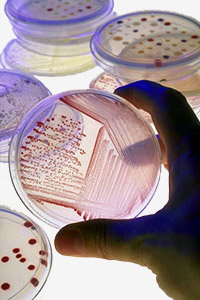 UVC & Mold Sterilization
UVC & Mold Sterilization
For HVAC applications, just as with all other UVC sterilization applications, direct exposure to 254nm UVC radiation, given appropriate exposure time, will inactivate the DNA and RNA of microorganisms (such as bacteria, viruses, mold spores, yeast, and protozoa), rendering them "sterile" (unable to reproduce), which, in biological terms, results in a "dead" microorganism.
An acceptable kill rate is determined by the total amount of UVC energy a microorganism "sees." This is a "dosage." Dosage is a product of the intensity of UVC radiation (expressed in microwatts per square centimeter) and exposure time to that radiation. You can find the necessary dosage for most common mold spores in the following table. Mold spores are generally much more difficult to kill than microorganisms and viruses and, thus, require a much higher dosage of ultraviolet light. The values shown under the percentage kill are in microwatts per square centimeter of UVC energy.
| MOLD SPORES | Color | 90% | 90% |
| Aspergillius flavis | Yellowish green | 60,000 | 99,000 |
| Aspergillius glaucus | Bluish green | 44,000 | 88,000 |
| Aspergillius niger | Black | 132,000 | 330,000 |
| Mucor racemosus A | White gray | 17,000 | 352,000 |
| Mucor racemosus B | White gray | 17,000 | 352,000 |
| Oospora lactis | White | 5,000 | 11,000 |
| Penicillium expansum | Olive | 3,000 | 22,000 |
| Penicillium roqueforti | Green | 13,000 | 26,400 |
| Penicillium digitatum | Olive | 44,000 | 88,000 |
| Rhisopus nigricans | Black | 111,000 | 220,000 |






